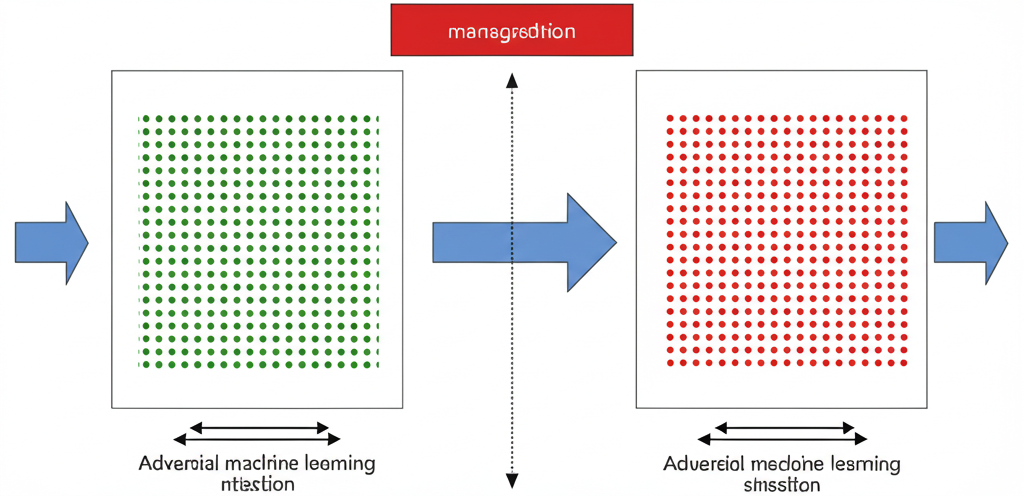Adversarial Machine Learning
Understanding the vulnerabilities of AI systems and how attackers can exploit them

Introduction to Adversarial Attacks
Adversarial machine learning is a technique that attempts to fool models by supplying deceptive input. The concept is based on creating inputs that will cause the model to make a mistake, despite these inputs being nearly indistinguishable from normal inputs to human observers.
Types of Adversarial Attacks
- Evasion attacks: Manipulating input data to evade detection or cause misclassification
- Poisoning attacks: Contaminating training data to compromise the learning process
- Model stealing: Extracting model parameters or architecture through queries
- Model inversion: Reconstructing training data from model outputs

Real-World Examples
In computer vision, adversarial examples can cause image classifiers to misidentify objects with high confidence. For instance, a carefully crafted sticker placed on a stop sign might cause an autonomous vehicle to interpret it as a speed limit sign.
In natural language processing, adversarial attacks can manipulate text to bypass content filters, generate toxic outputs, or extract sensitive information from language models.
Defending Against Adversarial Attacks
Several techniques have been developed to make AI systems more robust against adversarial attacks:
- Adversarial training: Including adversarial examples in the training data
- Defensive distillation: Training a second model on the softened outputs of the first model
- Input validation: Preprocessing inputs to detect and neutralize adversarial perturbations
- Ensemble methods: Combining multiple models to increase robustness

Practical Implications for Security Professionals
Security professionals need to understand that AI systems introduce new attack surfaces and vulnerabilities. When deploying AI-powered systems, especially in security-critical applications, it's essential to:
- Conduct thorough adversarial testing before deployment
- Implement continuous monitoring for unusual model behavior
- Establish human oversight for critical AI decisions
- Keep models updated with the latest adversarial defenses
- Maintain awareness of emerging attack techniques
Conclusion
As AI systems become more prevalent in security-critical applications, understanding adversarial machine learning becomes essential for cybersecurity professionals. By recognizing the vulnerabilities of AI systems and implementing appropriate defenses, we can build more robust and trustworthy AI applications.
Key Takeaways
- Adversarial attacks can manipulate AI systems in ways imperceptible to humans
- Different types of attacks target different aspects of the ML pipeline
- Defensive techniques like adversarial training can improve model robustness
- Security professionals must include AI systems in their threat models
Module Contents
- Introduction to Adversarial Attacks
- Types of Adversarial Attacks
- Real-World Examples
- Defending Against Adversarial Attacks
- Practical Implications
- Module Quiz
Earn $Initium
Complete this module to earn: